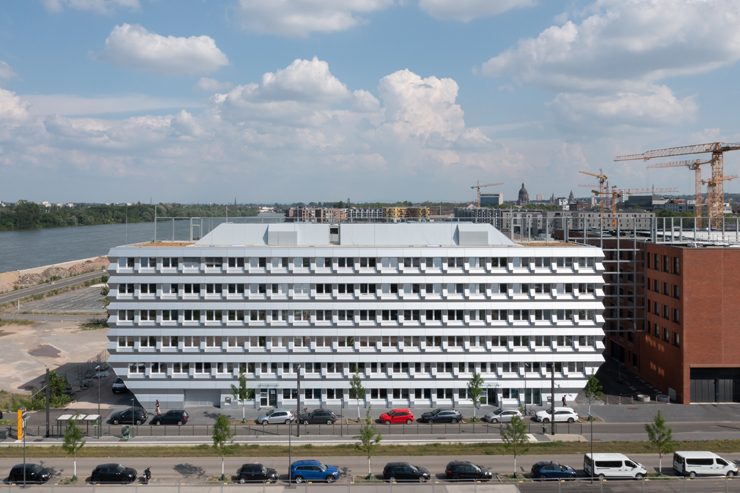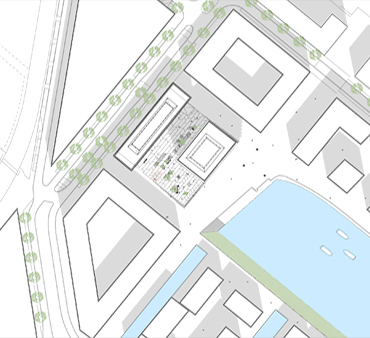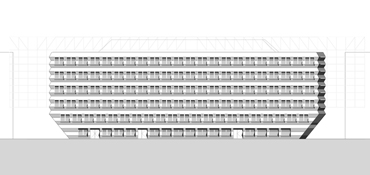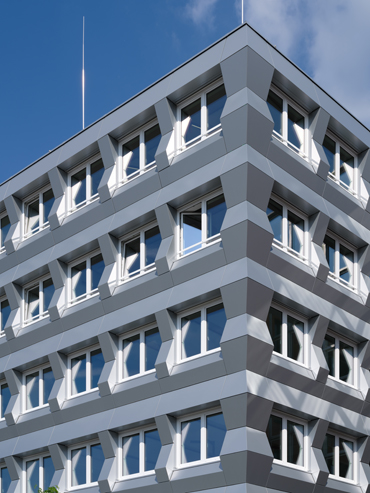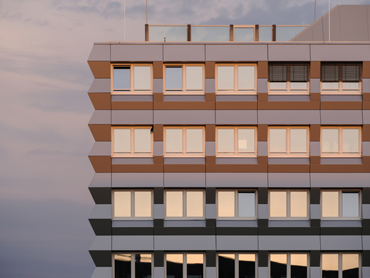morePlatz
architecture / urbanism / art / office / publications / contact deutsch
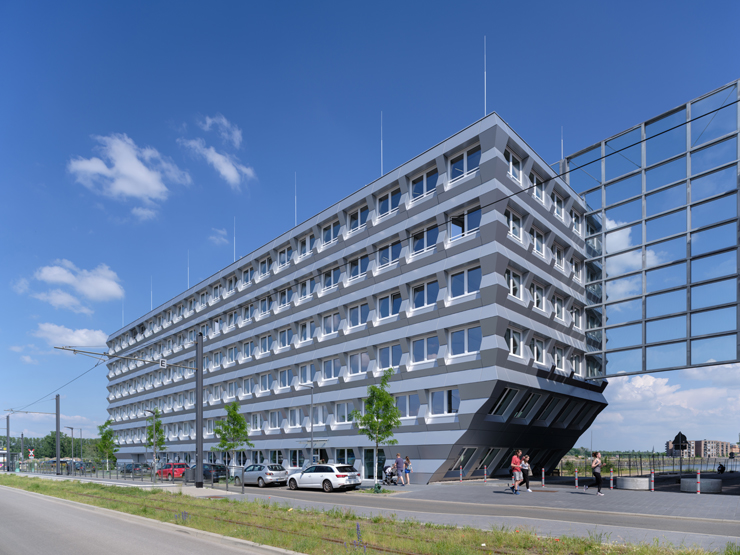
|
Like many of Europe’s formerly industrial harbour areas, Mainz’s Zollhafen is undergoing a transformation into a modern city quarter. Located northeast of the city’s Neustadt district on the west bank of the river Rhine, the former shipping container harbour will be converted into an urban mix of living, working, and leisure facilities, a significant urban transformation which will be one of the one of the most important regeneration projects in the city’s recent history. ZigZag is one of the pioneer projects in this large-scale transformation. The 4,200m2 building is the defining feature at the northern end of the harbour basin; located on the newly renamed Rotterdamer Platz, it opens onto the new waterfront square while acting as a noise buffer between the new urban quarter and the remaining industrial zone further to the north. To further reduce the noise impact on the new housing blocks, the design features an additional soundproof wall, consisting of a steel frame with glass panel infills that spans between ZigZag and its neighbours.
|
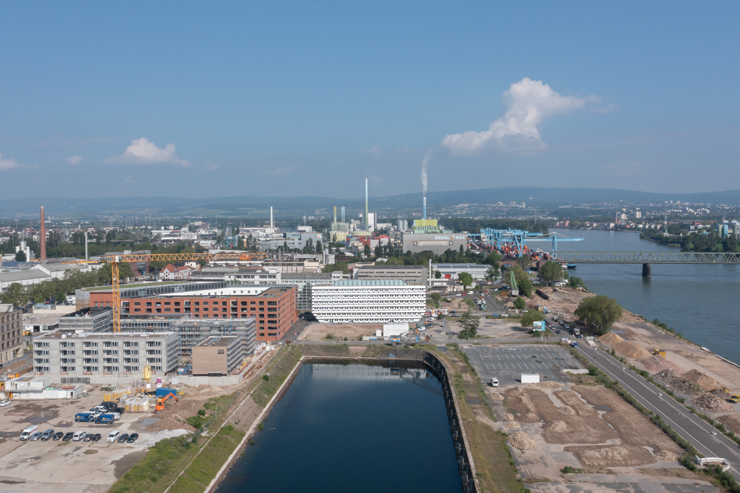
The design for the plot is based on a new interpretation of the urban masterplan - two free-standing volume instead of city-block sliced open. Thus, the court becomes a public plaza, and the new buildings can take advantage of the unique location at the head of the harbor. It can develop a distinctive character for the place, which is an important feature especially for a pioneering development of the area. Moreover, some flaws of the original plan to be corrected. The two buildings, the block and the tower, form an ensemble, expressed by the design of the tapering plinth and by similarities in the facade concept. At the same time the required differences in budget and function are expressed in the outer appearance. The volumes are designed as rather deep and compact office buildings compensating for the omission of the two side wings. |
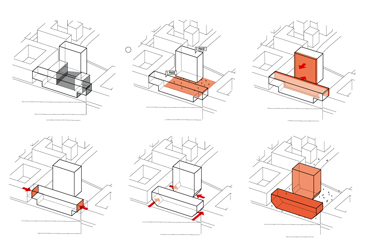 |
|
|
The façade of the six-storey building features a ”folded skin” of matt-silver coated aluminium panels, responding to the urban framework for the Zollhafen area. The depth of the elements allows external sunshades to be integrated and reduces glare. Light reflections from the silvery cladding emphasise the 3D visual effect to reinforce the sculptural impression of the building. On the ground floor, the zig-zagging façade tapers inward, providing extra outdoor space and opening up generous sightlines and pathways from the street to the water’s edge. |
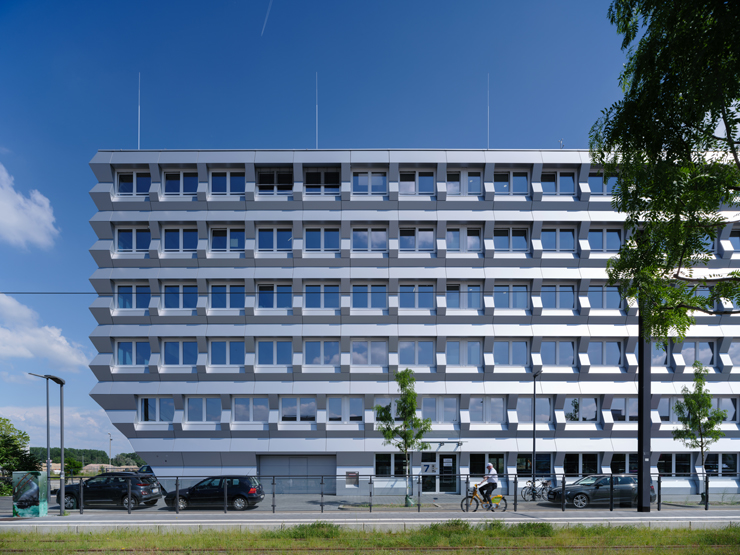
The interior can accommodate multiple tenants; people will access ZigZag via two independent lobbies on the ground floor, which also hosts a café on the waterfront. From the second to fifth floor large, open spaces allow tenants the maximum possible flexibility in fitting out their offices. The building incorporates modern, future-oriented office features such as smartphone-controlled lighting and temperature levels, while wireless solutions have been included throughout the building.
|
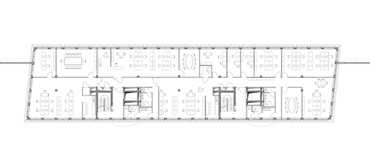 |
|
|
“With ZigZag we have created a functional yet visually striking addition to Mainz’s exciting new quarter”, says MVRDV Founding Partner Jacob van Rijs. “With the new public plaza at the centre of our plan, we wanted to encourage people to enjoy the waterfront and discover the transformed harbour. ZigZag lies like a ship at the end of the harbour, its folded, reflective façade standing out from its surroundings. I look forward to see its partner, the tower in our initial design, join it.” We are very happy to have this building completed in collaboration with MVRDV - in particular we are happy that the original design of the competition could be realised. ZigZag was designd for developer CA Immo. MVRDV and morePlatz collaborated with executive architects Schmidt Plöcker Architekten, structural engineers Planungsgemeinschaft Toni / Schwarzbart + Partner, mechanical engineers Plan-B, and electrical engineers Schad-Hölzel. |
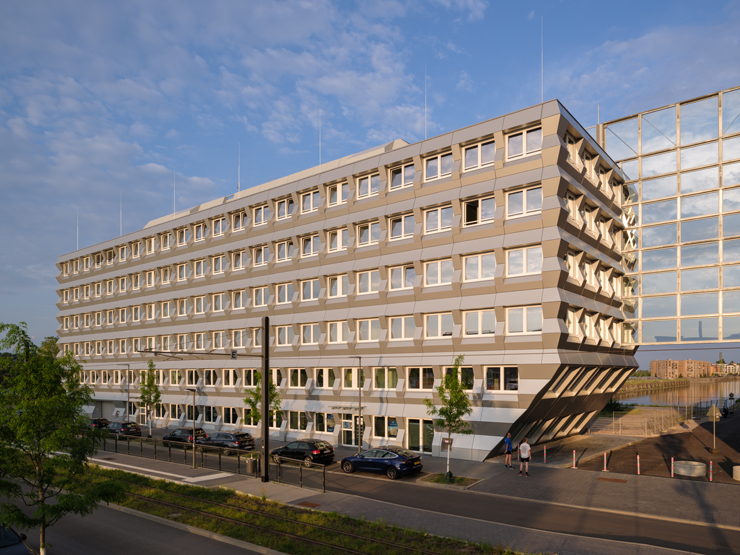
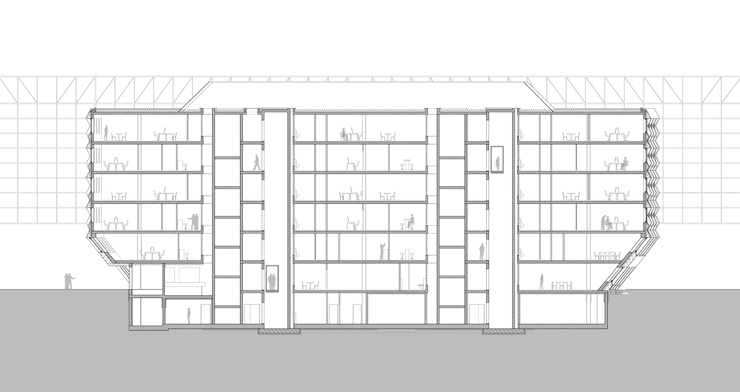
|
|
The cut-outs from the plinth zone open up the plaza and the sight lines towards the harbour. At the lower block, the plinth zone is cantilevering over the road in order to compensate and add more floorspace. The measure of the cantilever is resulting from a functional consideration, namely the maximum flight distances within the building. In addition, the short facades get daylight due to the distance to the neighbour. |
team credits: Fotos © Ossip van Duivenbode |
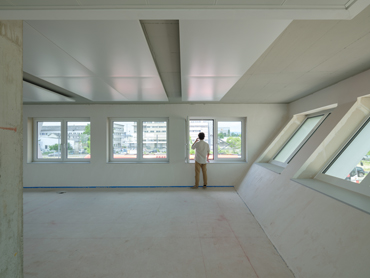 |
